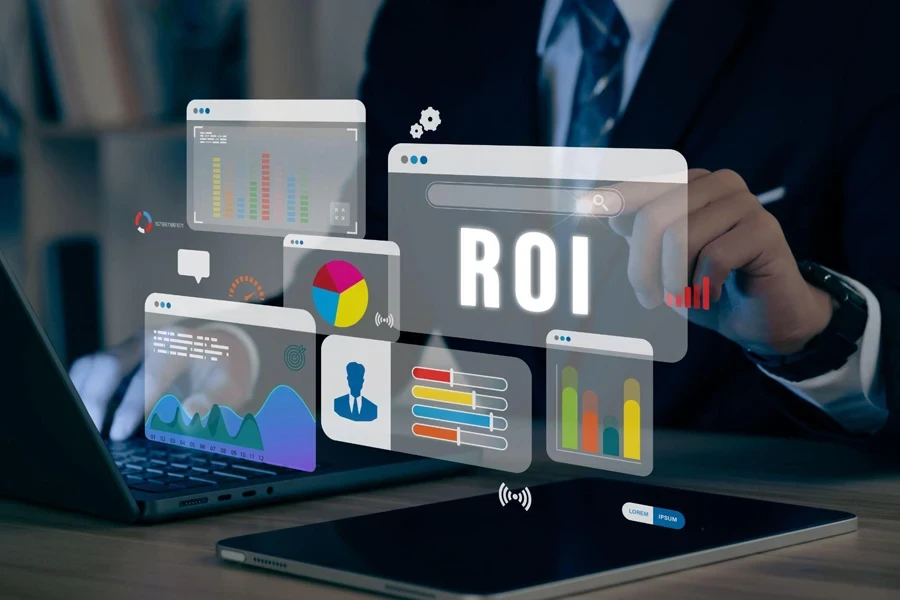Table of Contents
– Introduction
– Assessing your current situation and goals
– Crafting a clear vision statement
– Defining your TMS requirements
– Establishing decision criteria for vendor selection
– Developing a comprehensive implementation plan
– Calculating the total cost of ownership and ROI
– Conclusion
Introduction
A modern transportation management system (TMS) is a crucial tool for businesses looking to optimize their logistics operations, reduce costs, and improve customer satisfaction. However, securing the necessary investment from top management can be challenging. To gain buy-in and funding, it’s essential to build a compelling business case that demonstrates the value and potential return on investment (ROI) of a TMS implementation.
In this article, we’ll discuss the seven key elements you need to include when crafting a persuasive TMS business case. By addressing these critical components, you’ll be better equipped to communicate the benefits of a TMS to your organization’s decision-makers and secure the support needed for a successful implementation.
Assessing your current situation and goals
Before embarking on a TMS implementation, it’s crucial to conduct a thorough internal assessment of your organization’s current transportation processes, pain points, and objectives. This assessment will lay the foundation for building a strong business case and ensuring that the TMS you choose aligns with your specific needs.
Conducting an internal assessment
To effectively look at your current situation, start by engaging key stakeholders from various departments, including transportation, warehousing, finance, and IT. Gather their input on the current state of your transportation operations, including areas that may need improvement. Identify any manual processes that could be automated, bottlenecks that hinder efficiency, or visibility gaps that limit informed decision-making.
Next, evaluate your existing technology stack. Assess which systems your TMS would need to integrate with, such as your ERP, WMS, or order management system. Determine if any of these systems require upgrades or modifications to ensure seamless integration with a new TMS.
Setting clear objectives for the TMS implementation
With a clear understanding of your current situation, you can now define the specific goals and objectives you want to achieve with a TMS implementation. These objectives should align with your organization’s overall strategic priorities and should address the pain points identified during the internal assessment.
Some common objectives for a TMS implementation include:
– Reducing transportation costs through better route optimization and carrier selection
– Improving on-time delivery performance and customer satisfaction
– Enhancing visibility into real-time shipment status, carrier performance, and transportation spend
– Streamlining communication and collaboration with carriers and other trading partners
– Automating manual processes to increase efficiency and productivity
Clearly defining your objectives will help you build a more targeted and persuasive business case. It will also provide a framework for evaluating potential TMS solutions and vendors to ensure they can meet your specific needs.

Crafting a clear vision statement
A vision statement is a concise, aspirational description of what your organization hopes to achieve by implementing a TMS. It should clearly articulate the purpose and value of the project, serving as a guiding light throughout the implementation process and beyond.
The purpose of a vision statement
The primary purpose of a vision statement is to communicate the strategic importance of the TMS project to key stakeholders, including upper management, cross-functional teams, and end-users. A well-crafted vision statement helps to:
– Align stakeholders around a common goal
– Build enthusiasm and support for the project
– Provide a framework for decision-making and prioritization
– Maintain focus and momentum throughout the implementation process
Key elements to include in your vision statement
To create an effective vision statement, consider including the following elements:
1. The core purpose of the TMS implementation (e.g., to optimize transportation operations, reduce costs, or improve customer service)
2. The key benefits you expect to achieve (e.g., increased efficiency, enhanced visibility, or improved collaboration)
3. How the TMS aligns with your organization’s strategic goals and values (e.g., supporting growth, enhancing competitiveness, or promoting sustainability)
4. A timeframe for achieving the vision (e.g., within the next 12-18 months)
Keep your vision statement concise, typically no more than 2-3 sentences, and use clear, compelling language that resonates with your target audience.
Example of an effective vision statement
Here’s an example of an effective TMS vision statement:
“By implementing a modern TMS within the next 12 months, we will transform our transportation operations into a strategic advantage, reducing costs by 15%, improving on-time delivery performance to 98%, and enhancing collaboration with our carriers and partners. This will position our organization to achieve our growth targets and deliver exceptional value to our customers.”
This vision statement clearly articulates the core purpose (transforming transportation operations), the key benefits (cost reduction, improved performance, and enhanced collaboration), the alignment with strategic goals (achieving growth targets and delivering value), and a timeframe (within 12 months).

Defining your TMS requirements
To build a strong business case for a TMS, it’s essential to clearly define your requirements. This involves identifying the specific features, functionalities, and capabilities your organization needs in a TMS solution to achieve your goals and address your pain points.
Identifying essential features and functionalities
Start by creating a comprehensive list of the features and functionalities you require in a TMS. Consider your current transportation processes, the objectives you’ve set, and the feedback received from key stakeholders during the internal assessment phase. Some common TMS features and functionalities include:
– Route optimization and load planning
– Carrier selection and management
– Shipment tracking and visibility
– Freight audit and payment
– Reporting and analytics
– Integration with other systems (e.g., ERP, WMS)
– Mobile accessibility for drivers and other users
Be sure to include any industry-specific or unique requirements that are critical to your business.
Prioritizing requirements based on business needs
Once you have a comprehensive list of requirements, prioritize them based on their importance to your business needs. Classify each requirement as either “must-have,” “nice-to-have,” or “future consideration.” This prioritization will help you focus on the most critical features when evaluating TMS solutions and will guide your decision-making process.
Considering integration with existing systems
It’s also crucial to consider how the TMS will integrate with your existing technology stack. Identify the specific systems the TMS will need to interface with, such as your ERP, WMS, or order management system. Determine if any custom integrations or modifications will be necessary to ensure seamless data exchange and workflow automation.
Establishing decision criteria for vendor selection
Once you have defined your TMS requirements, the next step is to establish clear decision criteria for evaluating and selecting a TMS vendor. These criteria will help ensure that you choose a partner who can meet your organization’s specific needs and deliver a successful implementation.
Determining “must-have” vendor qualities
Start by identifying the “must-have” qualities you seek in a TMS vendor. These may include:
– Proven track record of successful TMS implementations in your industry
– Strong financial stability and long-term viability
– Robust customer support and training resources
– Flexible and scalable solution architecture
– Commitment to innovation and continuous improvement
– Alignment with your organization’s values and culture
These “must-have” qualities should reflect your organization’s priorities and risk tolerance, helping to narrow down the field of potential vendors.
Outlining the bidding and selection process
Next, define the steps in your bidding and selection process. This may include:
1. Issuing a Request for Proposal (RFP) to solicit bids from qualified vendors
2. Conducting initial vendor screenings and product demonstrations
3. Requesting and evaluating customer references and case studies
4. Engaging in detailed discussions and negotiations with shortlisted vendors
5. Conducting a final evaluation and making a selection decision
Defining project management expectations
Finally, establish your expectations for project management during the implementation phase. Consider factors such as:
– The vendor’s project management methodology and approach
– The level of collaboration and communication expected between the vendor and your organization
– The availability of dedicated project resources, including a project manager and technical experts
– The frequency and format of project status updates and progress reports

Developing a comprehensive implementation plan
A well-crafted implementation plan is a critical component of your TMS business case. It demonstrates to decision-makers that you have carefully considered the steps required to successfully deploy the new system and have a clear roadmap for achieving your objectives.
Creating a high-level overview of the implementation process
Start by providing a high-level overview of the implementation process. This should include the key phases and milestones, such as:
1. Project kickoff and planning
2. Requirements gathering and solution design
3. System configuration and customization
4. Data migration and integration
5. Testing and quality assurance
6. User training and change management
7. Go-live and post-implementation support
This overview will give stakeholders a clear understanding of the end-to-end implementation journey and help set realistic expectations for the project timeline and resource requirements.
Breaking down the implementation into key phases
Next, provide a more detailed breakdown of each phase in the implementation process. For each phase, include:
– The specific activities and tasks involved
– The deliverables and milestones to be achieved
– The resources required, including internal staff and external consultants
– The estimated duration and timeline for each phase
– The dependencies and risks associated with each phase
Addressing potential risks and challenges
Finally, proactively identify and address any potential risks and challenges that may arise during the implementation process. These may include:
– Data quality and migration issues
– Integration challenges with existing systems
– Resistance to change from users or stakeholders
– Resource constraints or competing priorities
– Technical issues or system performance problems
For each identified risk or challenge, develop a mitigation strategy and contingency plan. This may include additional testing and quality assurance measures, targeted change management activities, or contingency resources to address potential delays or issues.
Calculating the total cost of ownership and ROI
One of the most critical components of your TMS business case is a detailed financial analysis that demonstrates the total cost of ownership (TCO) and the expected return on investment (ROI). This analysis will help decision-makers understand the financial impact of the TMS implementation and the long-term value it will deliver to the organization.
Estimating the total cost of ownership
Begin by estimating the TCO of the TMS implementation. This should include all direct and indirect costs associated with the project, such as:
– Software licensing and subscription fees
– Hardware and infrastructure costs
– Implementation and consulting services
– Internal labor costs for project team members
– Training and change management expenses
– Ongoing maintenance and support costs
Be sure to consider both one-time and recurring costs over the expected life cycle of the TMS solution, typically 3-5 years.

Calculating the expected return on investment
Next, calculate the expected ROI of the TMS implementation. This involves quantifying the financial benefits and cost savings the organization expects to achieve as a result of the new system. Some common areas of ROI for a TMS include:
– Reduced transportation costs through better route optimization and carrier selection
– Improved labor productivity through automated processes and streamlined workflows
– Increased customer satisfaction and retention through better on-time delivery performance
– Lower inventory carrying costs through improved visibility and demand planning
– Reduced administrative costs through automated freight audit and payment processes
Quantify these benefits using a combination of historical data, industry benchmarks, and conservative assumptions. Be sure to consider both hard dollar savings and soft benefits, such as increased competitiveness and improved decision-making.
Developing a cash flow projection and financial summary
Using the TCO and ROI estimates, develop a cash flow projection that shows the expected financial impact of the TMS implementation over the next 3-5 years. This should include:
– The upfront investment required for the implementation
– The ongoing costs associated with the system
– The expected cost savings and revenue enhancements resulting from the TMS
– The net cash flow and cumulative return on investment over time
Present this information in a clear, concise financial summary that highlights the key metrics and makes a compelling case for the financial viability of the TMS project.

Conclusion
In today’s fast-paced, highly competitive logistics landscape, a modern transportation management system is no longer a luxury but a necessity for companies looking to optimize their supply chain operations and stay ahead of the curve. By implementing a TMS, organizations can streamline processes, reduce costs, improve service levels, and gain a critical competitive advantage.
However, building a compelling business case for a TMS implementation requires careful planning, thorough analysis, and effective communication. By following the seven key steps outlined in this article, you can develop a strong, persuasive business case that demonstrates the strategic value and financial viability of a TMS investment.

Looking for a logistics solution with competitive pricing, full visibility, and readily accessible customer support? Check out the Alibaba.com Logistics Marketplace today.




